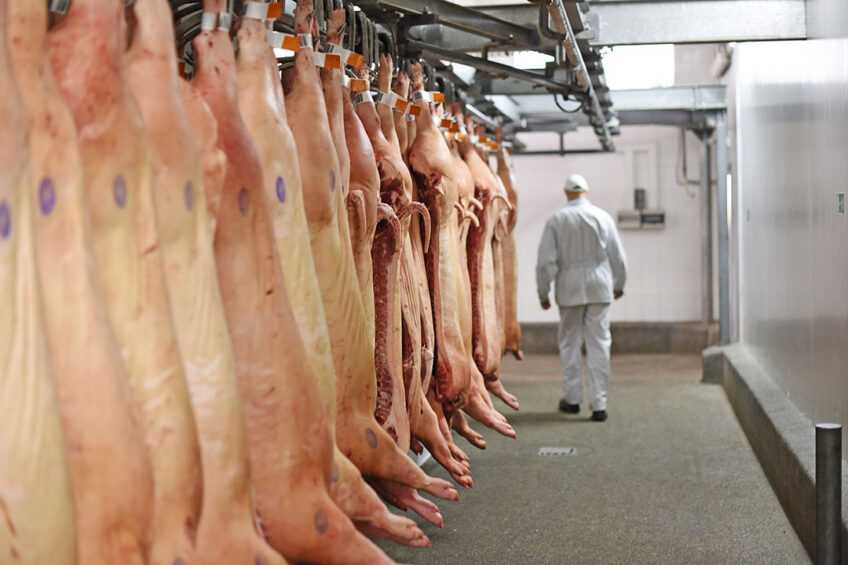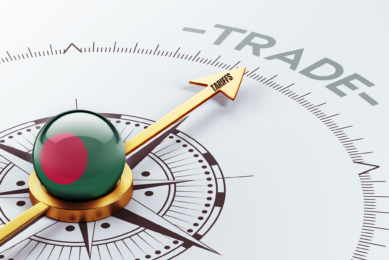Russia is only at the beginning of its export journey: A focus on agriculture

For years, the development of the Russian agricultural industry has been going hand in hand with the state import-replacement campaign. Now, exports to politically friendly countries of Asia-Pacific, the Middle East, and Africa have come to the fore.
Dairy moving to an export-oriented model
Russian government officials and business groups are showing increasing optimism about future export growth. The Russian dairy industry switches from an import-replacement to an export-oriented development model, Maria Zhebit, spokesperson for Soyuzmoloko, a prominent Russian union of dairy businesses, asserted. The Russian authorities have recently subjected dairy export to a 100% logistics subsidy in a bid to help the dairy processors break out into the new market.
Pork production expect to grow 0.5 million tons by 2025
The pig industry’s further development potential entirely depends on export, as domestic consumption is already exceptionally high, while the import-replacement push is exhausted, Ricom-Trust, a Moscow-based consultancy, said. Now, all investments in the Russian pig industry are made primarily with a view to future growth in exports: in recent years, a number of large companies have built pig farms with the expectation of exporting pork to Asian countries, including China.
By 2025, Russian pork production is expected to grow by 0.5 million tons, compared with 2022, according to the Russian Union of Pork Producers. In 2024, the first shipments to China are due to be made, as the Chinese veterinary authorities removed a 15-year ban on Russian pork. This should buttress Russian export potential by 200,000 to 300,000 tons, and pave the way for the country to the list of top-5 world’s largest pork exporters.
Russian pet food sector competitive on global market
Even the Russian pet food sector weighs on export opportunities. Russian pet food companies currently have enormous potential to expand export, commented Kirill Dmitriev, president of the Russian National Association of Zoo Industry. Russia has several essential advantages making its products competitive on the global market, primarily access to cheap energy resources and a skilled but experienced labour force, he added.
Dairy and meat export expansions
Russian authorities are making titanium efforts to facilitate food exports, with Rosselhoznadzor, the country’s veterinary watchdog, working strenuously to get a general green light for Russian businesses to export meat and dairy products to the new markets.
Over the past 6 years, Russian meat and dairy manufacturers got permission to export agricultural products to 90 countries, Artem Daushev, assistant to the head of Rosselhoznadzor, estimated. This year, noticeable progress is being seen in the Middle East. The first batch of Russian beef has been sent to Oman, the first pork exports have been made to Christian-populated parts of Lebanon, and dairy products to the UAE.
Ties with China
However, the fast Chinese market undoubtedly offers the most immense opportunities, especially since the 2 countries have been forging stronger political and economic ties in recent years, and this trend is expected to gain full steam. Under a recently sign Russia-China trade plan, trade between the countries should more than double, reaching $400 billion in 2030.
“Behind the decision by Beijing [to approve Russian pork imports], one can see not only economic but also political rationale. Currently, the biggest pork exports to China are the US, Canada and Brazil. So, the pivot towards Russia can be taken as a new round of trade war against the US,” Ivan Romodanov, a Russian analyst wrote in a blog on the Russian Versia website.
Feed industry stays busy
In 2023, Russian feed production will exceed 35 million tonnes, the Russian Agricultural Ministry forecasted. Last year, Russian mills manufactured 34.2 million tonnes of feed, 2.3 million tonnes up compared with the previous year. Despite the impact of Western sanctions, this was the strongest growth in the past decade. Russia ended up the world’s sixth largest feed producer, behind China, the US, Brazil, India and Mexico, but ahead of Spain, Vietnam, Argentina and Germany, according to Alltech.
Most new projects in the Russian feed industry envisage export volumes since building new capacities targeting only the Russian and Belarussian markets is not always justified, commented Sergey Mikhnyuk, executive director of the Russian National Feed Union. Russia and Belarus share a common customs space and have recently been jointly planning their export efforts.
Russian feed industry definitely has growth potential…
Belarussian National Biotechnological Corporation (BNBC) has established large lysine production and recently saw some progress in developing exports. “This year, BNBC has registered its lysine for export to Brazil and has contracts with its partner Adam Bio with Turkish customers,” Mikhnyuk said. Mikhnyuk agreed that livestock export offers fast development opportunities to the Russian feed industry but argues that the growth potential on the domestic market is not exhausted. Russian feed industry definitely has growth potential, including thanks to exports, commented Lyubov Savkina, general director of Feedlot, a Moscow-based consultancy. “We have production resources, territory with access to various export directions, and partner countries that are ready to purchase our products,” Savkina stated.
In the coming years, the production of feed additives will develop in Russia and, of course, the construction of such plants will be export-oriented
Russia also relies on forecasts of the future economic growth of African countries and the general rise of the global population, which should spur global feed consumption, Savkina stated. Not only Russian livestock industry is going to be export-oriented in the coming years. Feed additives themselves have certain export opportunities, according to Savkina. Currently, Russia imports roughly 90% of feed additives, with 80% of those quantities coming from China. “In the coming years, the production of feed additives will develop in Russia and, of course, the construction of such plants will be export-oriented,” Savkina said, adding that the import dependence in this field will eventually be overcome.
Russian feed companies have recently rolled out some big investment projects. Roschem, a major Russian chemical company, disclosed plans to invest 85 billion roubles ($900 million) to launch the production of feed tryptophan, valine and threonine at the recently acquired Dontiotech plant in the Russian south.
“Russia is only at the beginning of its [export] journey,” Savkina asserted.
Putting the brakes on poultry exports
Russian exports, however, are limited by expensive logistics and the internal market situation. The Russian government recently announced plans to impose a 6-month ban on the export of poultry and eggs from the country. Since the beginning of 2023, domestic broiler meat prices jumped by 27% compared with the previous years, sparking worries among Russian customers and making the Russian authorities anxious over food inflation rates.
It is really questionable whether export is to blame. During the first half of 2023, Russia exported 148,000 tonnes of poultry, 7% lower compared with the previous year. Roughly 78,000 tonnes landed in China and 30,000 tonnes in Saudi Arabia. A series of avian influenza outbreaks played an important role in the upward rally in the Russian market, according to Savkina.
Russian poultry industry may suffer severe reputational and economic losses from the poultry export ban, Sergey Yushin, executive director of the Russian National Meat Association, commented.
“Sometimes supplies are made at a loss just to enter foreign markets and gain a foothold out there. We are fighting there with the world’s largest producers and competitors, such as the USA, the European Union, Brazil, Argentina, and Thailand. And the departure of Russian poultry meat from one or another market will benefit them,” Yushin said.
In addition, some Russian products are exported under long-term contracts to retail chains. “To take a place on the shelf in foreign retail, to win the trust of local consumers is a matter of colossal work and a huge investment. If we are unpredictable in terms of our supplies, they [foreign retailers] simply will not work with us at all. A holy place is never empty,” Yushin warned.
Russian dairy export associated with logistics costs is twice as high compared to those of their European competitors, estimated Anatoly Losev, general director of Russian dairy processor GK Molvest. In some Asian directions, logistics costs have skyrocketed by a factor of 7 times, as carriers charge higher fees when working with Russian goods, and getting insurance for the cargo has also become a tricky task.
Impact of sanctions
While Western sanctions have not hurt the Russian livestock industry as a whole, it certainly made the process of delivering goods to foreign customers more complicated.
Full logistics subsidies, like those recently approved for dairy export, could become a game-changer for the industry, but it is doubtful whether the Russian government could afford such a spending bonanza for long, given that the national budget is already strained.
Future of Russia feed additive production
There is no clarity on the future of Russian feed additive production. Any projects in this field lack economy of scale, which means there is no sense in building capacities exclusively to meet the domestic demand. In fact, export is crucial to secure import-replacement. However, investing money when export prospects are not guaranteed looks risky.
It can be assumed that Russian market players will have a closer look at export-oriented projects, like BNBC and Far East-based feed additive manufacturer Arnica, to see whether export in the current conditions is possible and whether investments are worth the risk.











